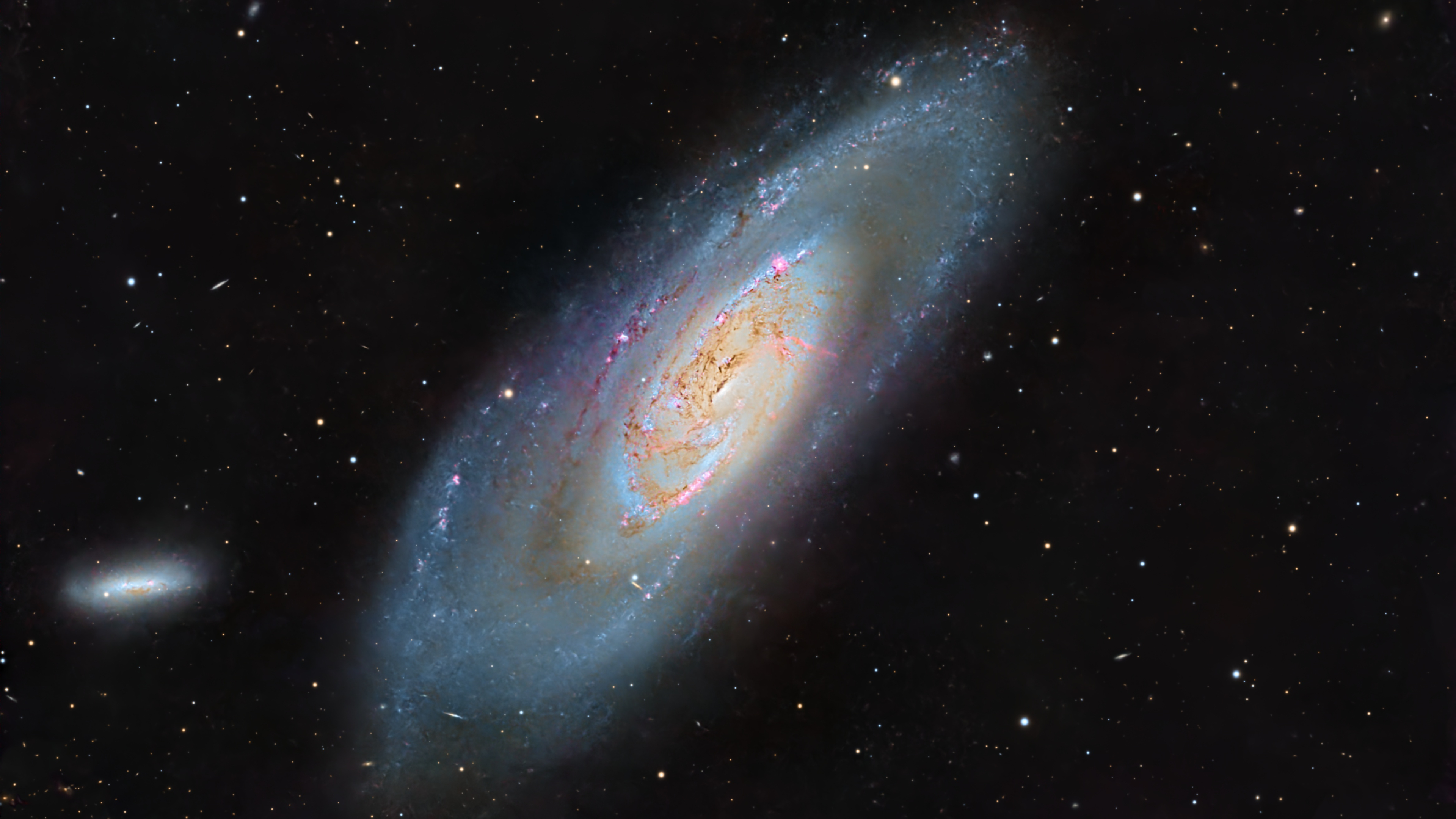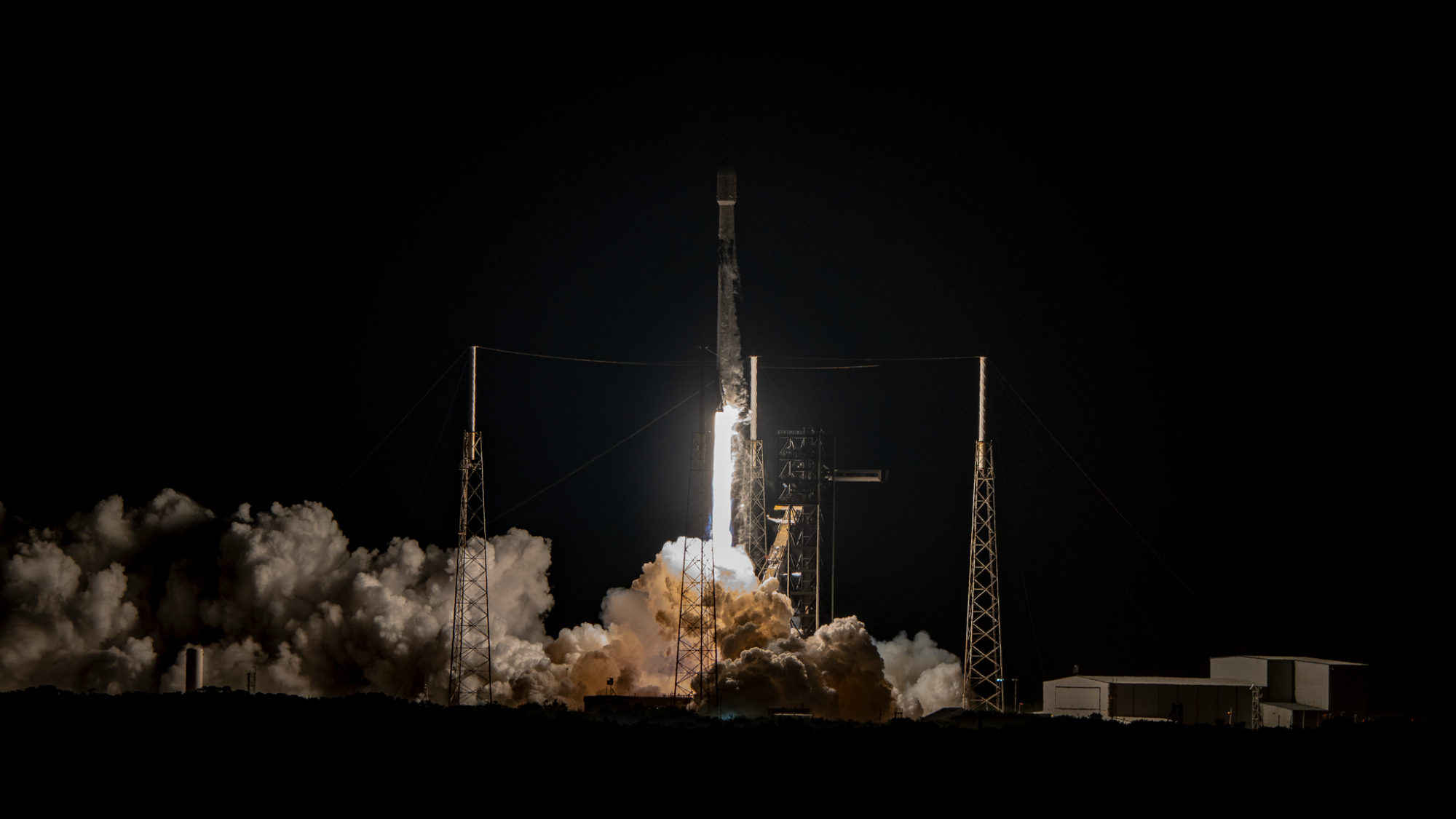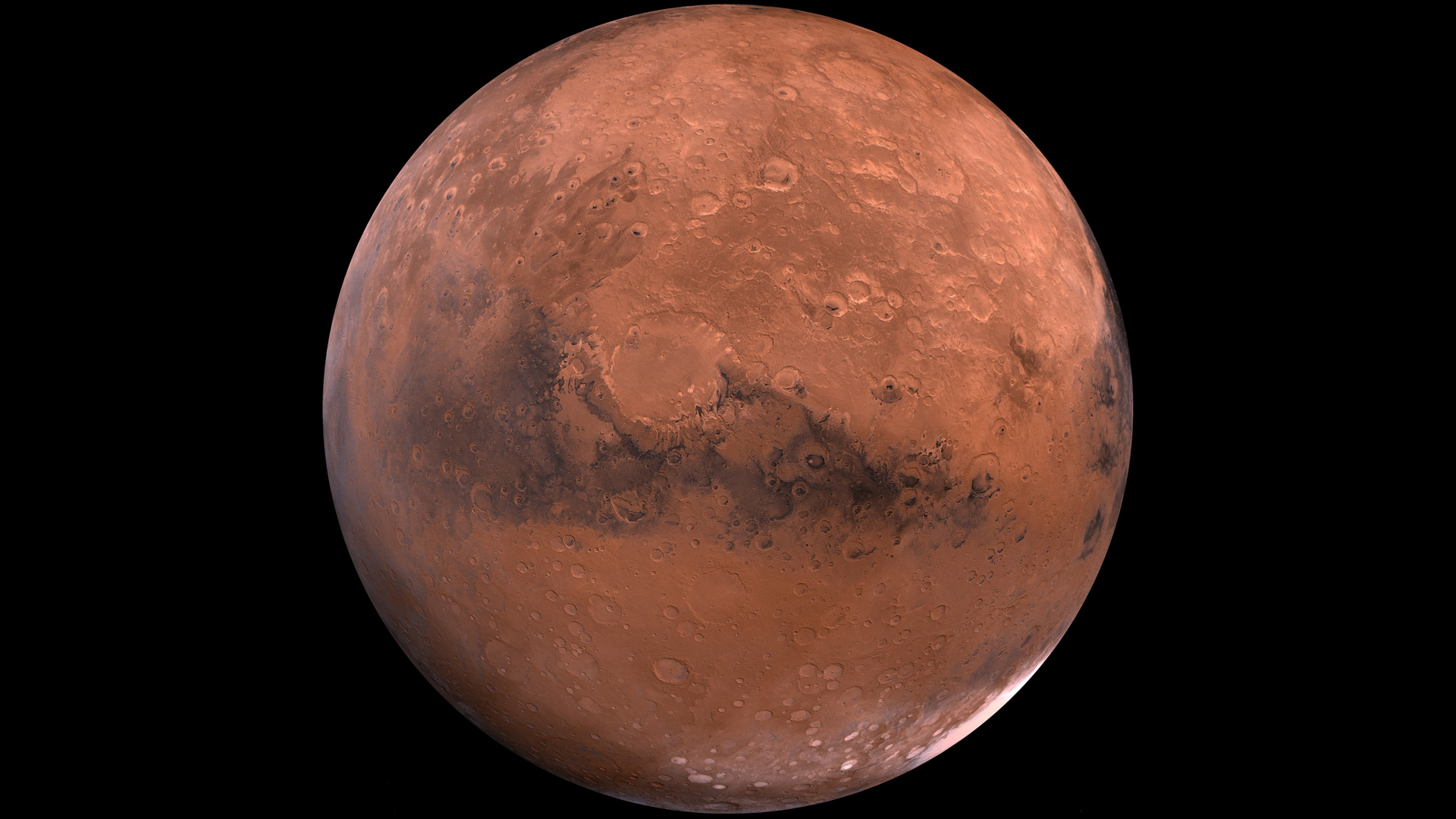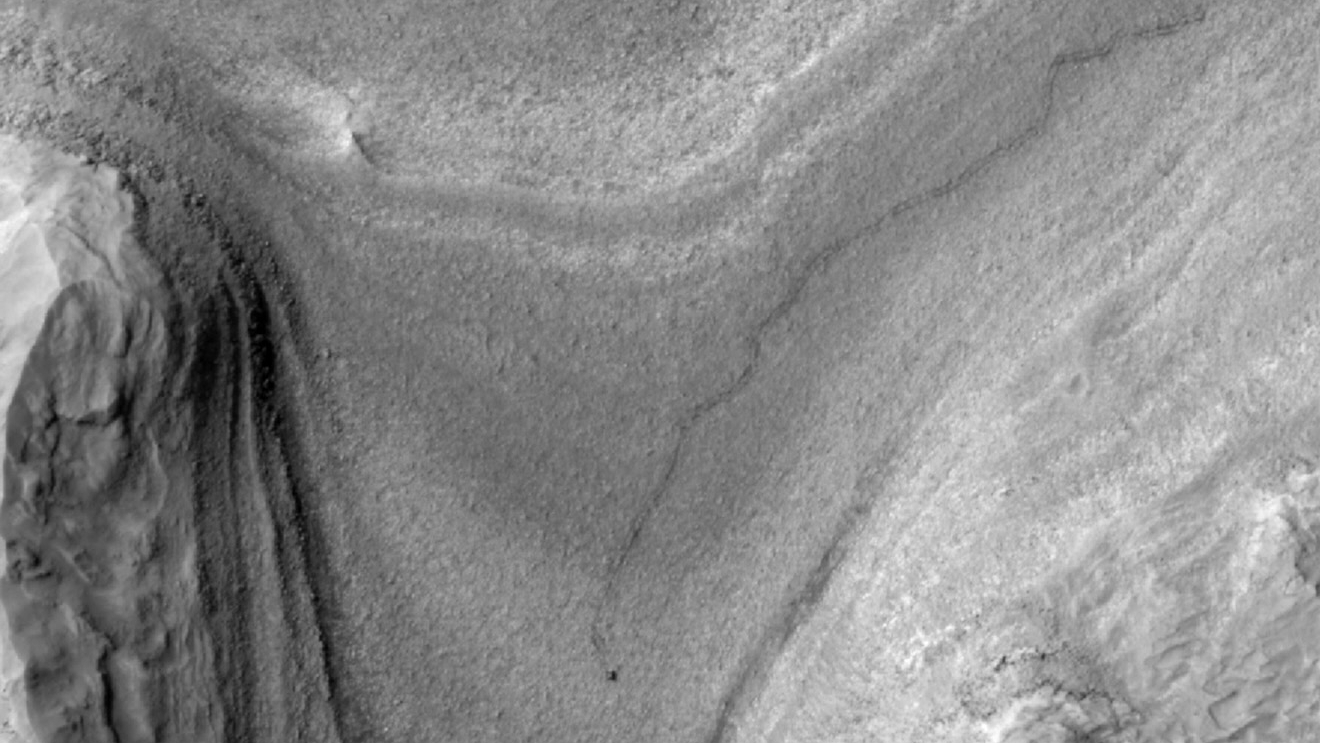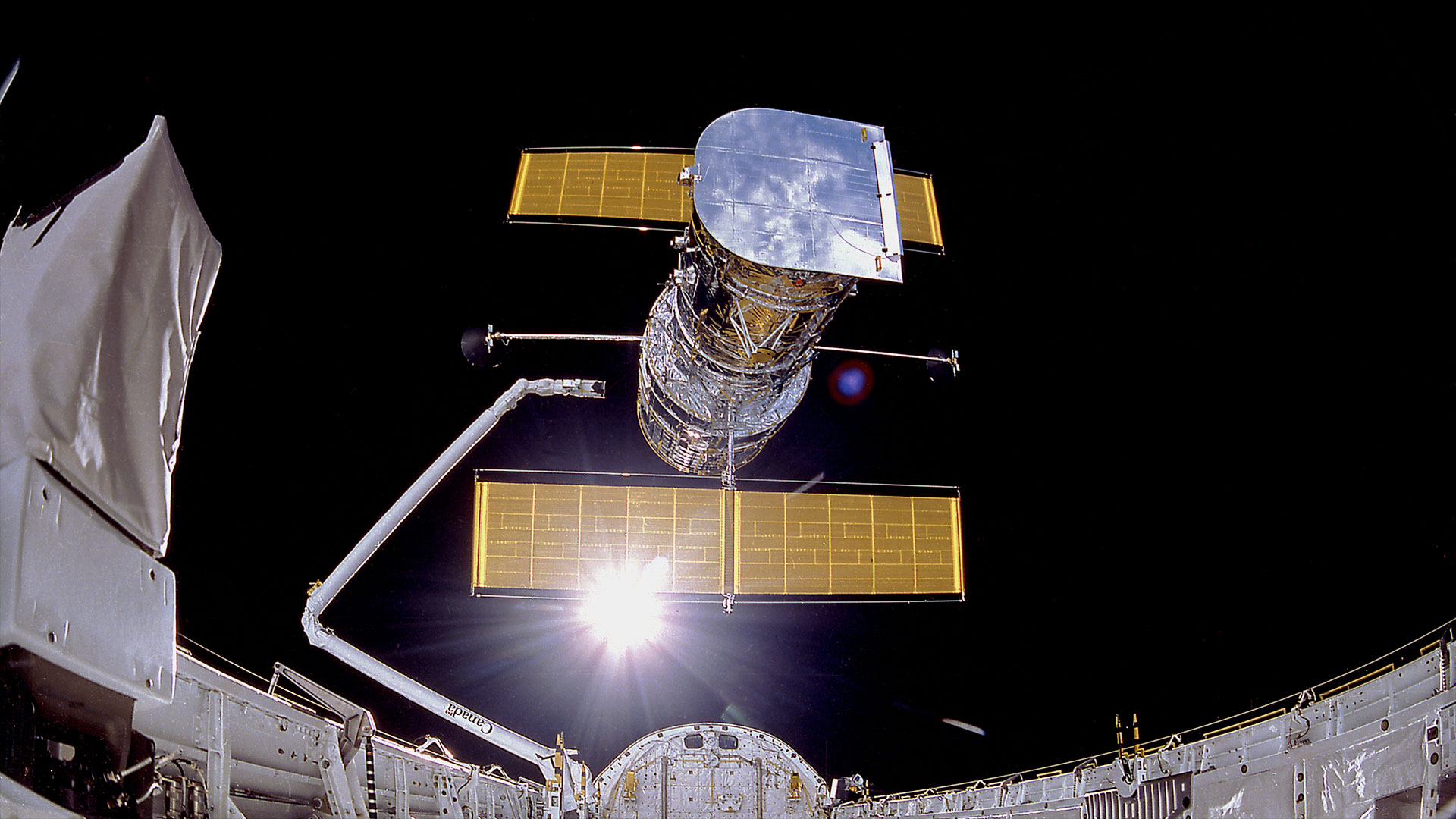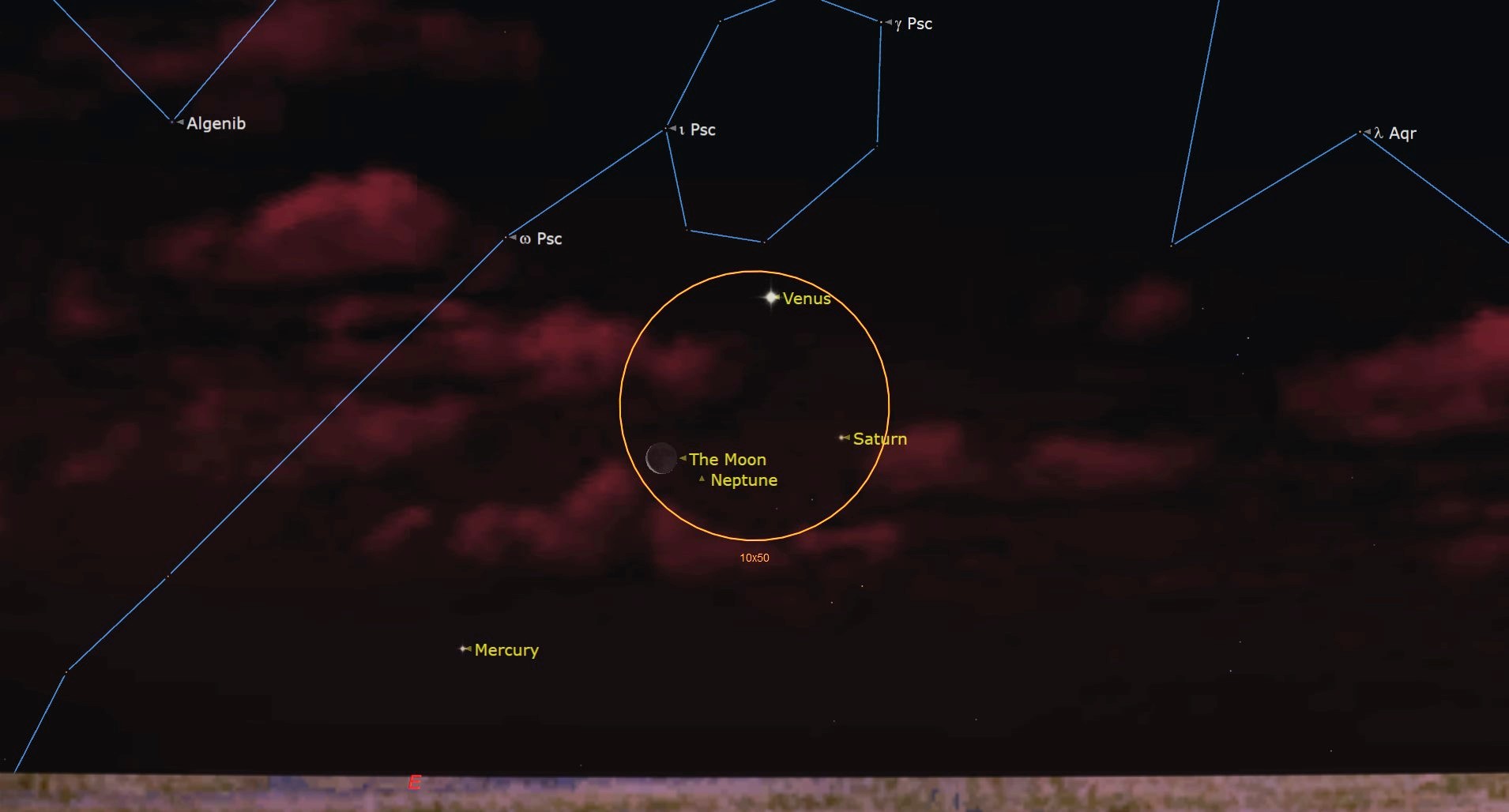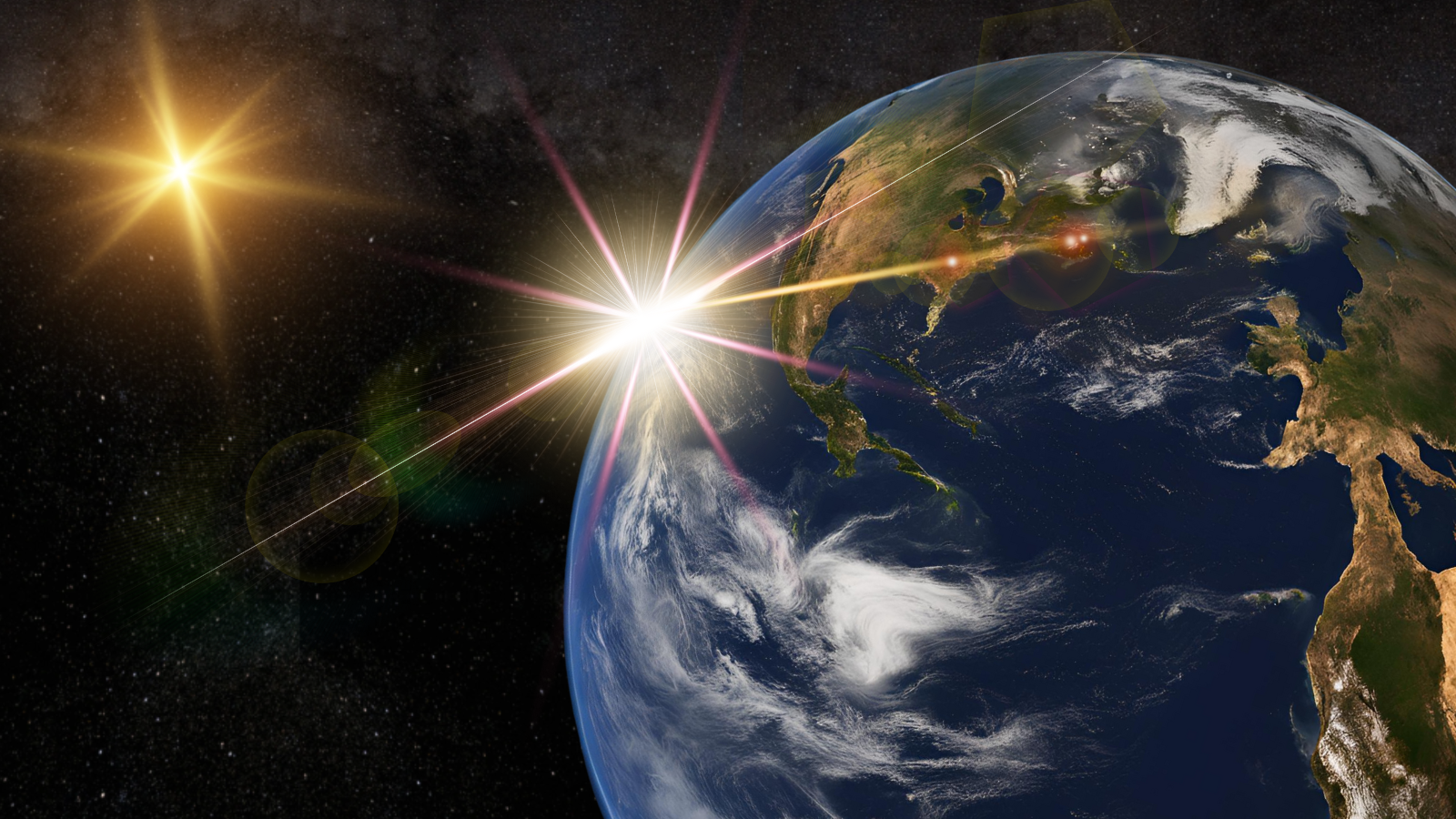New moon of April 2025 sees Venus and Saturn join up in the sky this weekend
The planets will be challenging to spot in the early morning as the sun rises, however.
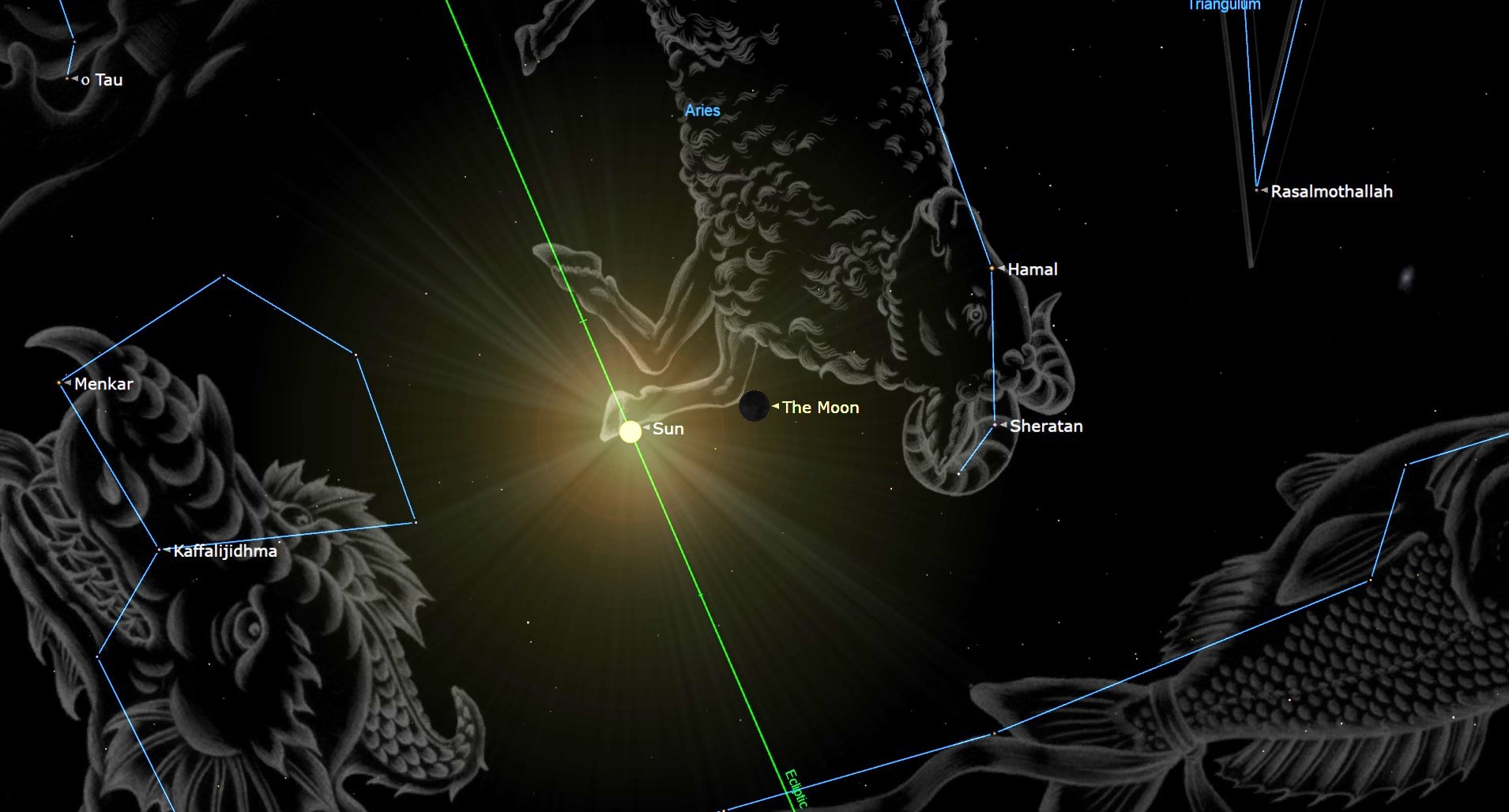
The new moon occurs April 27, and a day later Venus and Saturn will make a close approach to each other (known as a conjunction) in the predawn sky.
To make a new moon, you need to line up the sun, moon and Earth. From the earthbound observer's viewpoint, the sun and moon are at the same celestial longitude, a projection of the Earth's longitude lines on the sky. Most often the moon passes above or below the sun but at times it passes directly between the sun and Earth, creating a solar eclipse as happened during March's new moon and will happen again in September of this year.
New moon nights are good for skywatchers who want to catch fainter objects or meteors; the fact that the moon isn't out means its light won't overwhelm them; for example one can see the Milky Way from a dark sky site much more easily when the moon is below the horizon, which is the case for the entire night of the new moon.
Timing of a lunar phase depends on the position of the moon, so the hour a given phase occurs depends on one's longitude. For those in the Eastern time zone, the exact moment of the new moon phase occurs at 3:31 p.m. EDT (1931 UTC) on April 27, according to the U.S. Naval Observatory.
West of the Eastern time zone the new moon occurs earlier – in Denver, for example, it is at 1:31 p.m. East of that zone it will be later; in London it is at 8:31 p.m. and in Tokyo the new moon happens on April 28 at 4:31 a.m.
Visible planets
The Venus-Saturn conjunction will be at 0223 UTC on April 29 (10:23 p.m. Eastern Time on April 28) and the planets will be less than 4 degrees apart. To see the pair at the moment of conjunction one has to be east of London and relatively close to the equator or in the Southern Hemisphere — but that doesn't mean the two planets are completely invisible for people in North America and Europe.
From New York (and locations at similar latitudes), Venus will be visible in the wee hours of the morning. The planet rises at 4:16 a.m. Eastern time on April 28, with Saturn following at 4:30 a.m. Venus is the more easily visible of the two as by 5:00 a.m. it is about 8 degrees above the horizon; Saturn will be at about 5 and a half degrees, to the right of Venus.
Get the Space.com Newsletter
Breaking space news, the latest updates on rocket launches, skywatching events and more!
They will be challenging to spot as the sun rises in New York at 5:58 a.m.; Venus will be the last "star" to fade from view as the sky lightens, one exercise is to see how close to sunrise one can still see it. The planets' close pass to each other at 10:23 p.m. Eastern Time on April 28 (according to skywatching site In-the-sky.org) but they will both be below the horizon at that time.
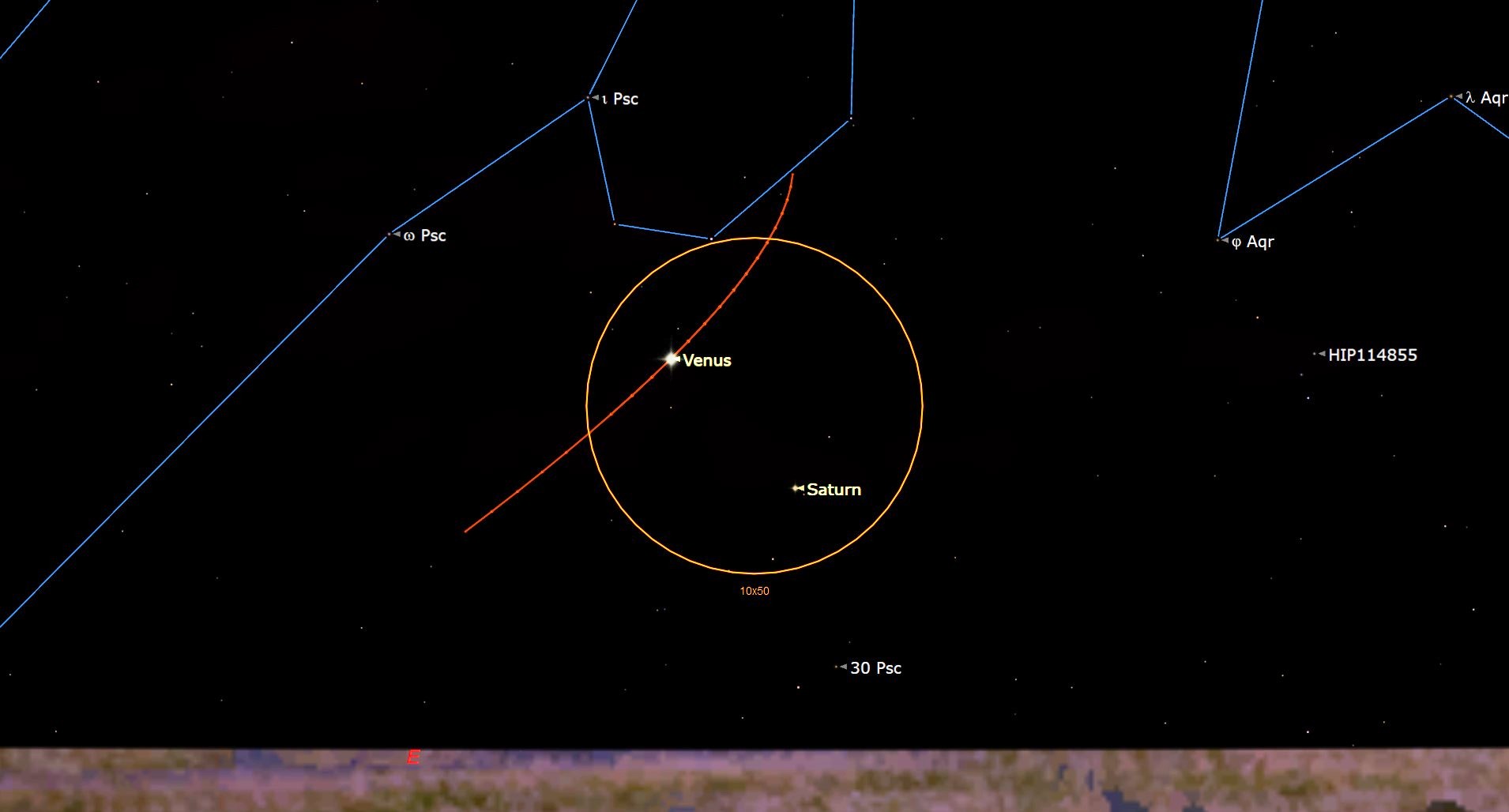
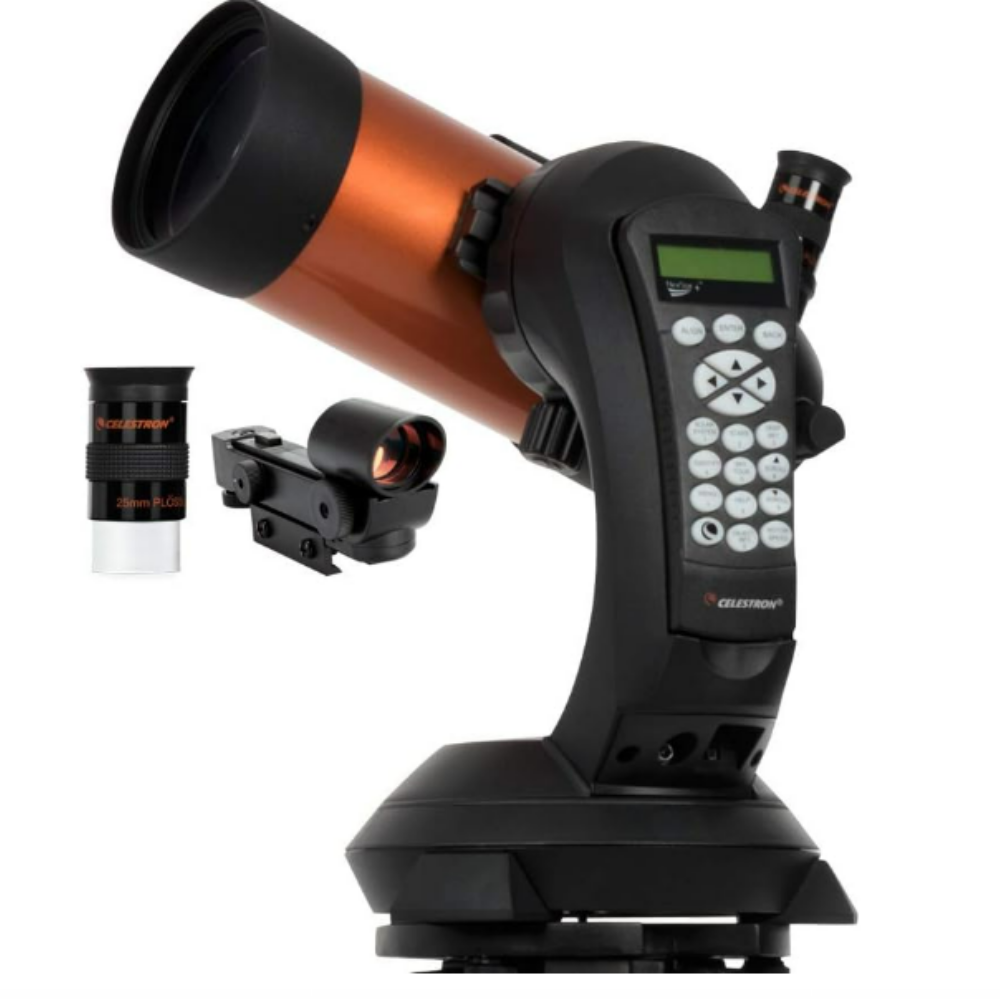
Want to see the planets of the solar system? The Celestron NexStar 4SE is ideal for beginners wanting quality, reliable and quick views of celestial objects. For a more in-depth look at our Celestron NexStar 4SE review.
On the evening of April 27 the sun sets in New York at 7:48 p.m., and civil twilight — the point where the sun is six degrees below the horizon — ends at 8:17 p.m. At that point Jupiter is just visible in the west, about 32 degrees above the horizon (this is about a third of the way up to the zenith). Jupiter sets in New York at 11:19 p.m.
Looking to the left (east) of Jupiter and higher — at about 63 degrees high in the southwest — is Mars. Mars is visibly redder than Jupiter, if fainter, but it is bright enough to be one of the objects visible sooner after sunset. Depending on the weather (for example if the sky is hazy) one might have to wait until 8:30 p.m. for the planet to really come out. Mars stays visible until 2:20 a.m. (April 28).
As one moves towards the equator Jupiter and Mars will appear higher in the sky; from Miami, for example, sunset is at 7:50 p.m. April 27, and Jupiter sets at 11:05 p.m. At the end of civil twilight at 8:14 p.m. Jupiter is 35 degrees high in the west, while Mars is a full 77 degrees high in the southwest. The Red Planet sets at 2:10 a.m. April 28.
The difference is most pronounced for Venus and Saturn. In Miami, Venus rises at 4:43 a.m. on April 28, and Saturn at 4:52 a.m. sunrise is at 6:46 a.m. By 5:45 a.m. Venus is 13 degrees high and Saturn is to the right of it at about 11 and a half degrees above the eastern horizon. By civil dawn (6:22 a.m.) Venus is high enough that it is easy to spot and Saturn should still be just visible.
While Mercury is lost in the solar glare further north, from Miami the planet is a little bit easier to see, though still a difficult target; Mercury rises at 5:37 a.m. local time and by 6:00 a.m. Mercury is 5 degrees high. If one is looking at an unobstructed and clear horizon (for example over the ocean) then Mercury is a steady light about as bright as Saturn.
From equatorial locations such as Singapore, Nairobi or Quito, Venus and Saturn will be higher in the sky at sunrise. Nairobi is far enough east that when the two planets reach conjunction they do so ahead of sunrise and be above the horizon. In Nairobi, Venus rises at 3:56 a.m. on April 29 and Saturn at 3:56 a.m., the conjunction is at 5:23 a.m. and the sun rises at 6:28 a.m. That means Venus and Saturn will be 21 degrees high in the east, with Venus to the left (north) of Saturn. While the local rising times for Venus and Saturn are similar, Quito is too far west to see the actual conjunction (it will occur before they rise) while Singapore is too far east (the conjunction happens during the day).
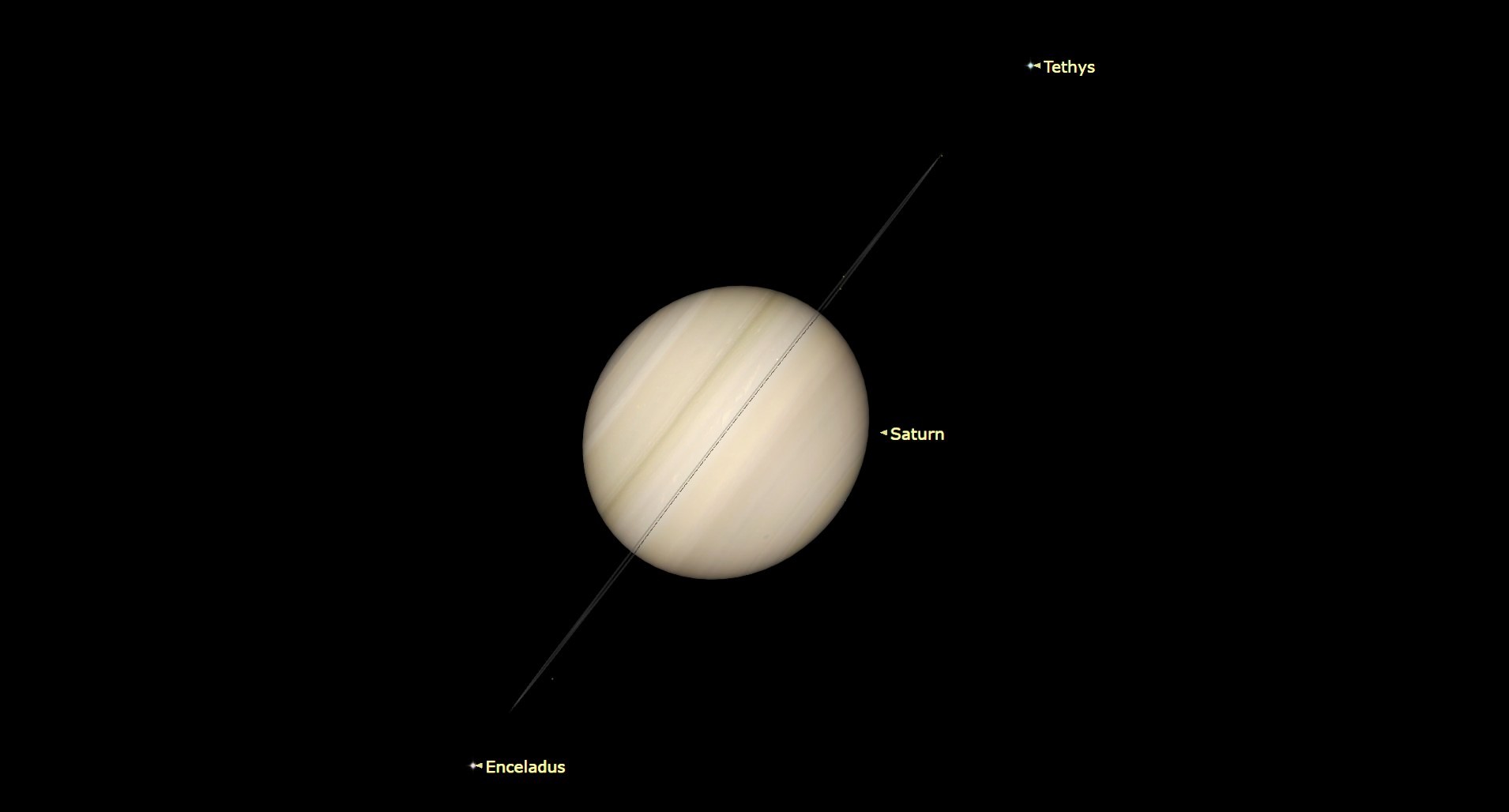
From nearer the equator, Mercury will be a much easier target than from anywhere in North America or Europe; on April 28 in Nairobi, Mercury rises at 4:53 a.m. it will be 16 degrees high by 6:00 a.m., one can watch the planet fade compared to Venus (which is much brighter) as the sky gets lighter.
As one gets into the mid-latitudes of the Southern Hemisphere, the days are getting shorter as we head into the austral autumn and winter. In Cape Town, South Africa, sunset is at 6:08 p.m. on April 28. By about 6:45 p.m. local time Jupiter will be 18 degrees high in the northwest and one of the first few "stars" to come out. At that point Mars will be almost due north at 35 degrees high, as the evening progresses both planets will be more prominent.
In the early hours of April 29, from Cape Town, Saturn rises at 4:02 a.m. and Venus at 4:12 a.m. The two planets are in conjunction at 4:23 a.m. Saturn will be above and to the right of Venus. Mercury rises at 5:11 a.m. and by 6 a.m. the planet is 9 degrees high – one needs an unobstructed horizon to see it, but the sky will still be dark as sunrise is not until 7:20 a.m.
If you're looking for a telescope or binoculars to observe the planets in the night sky, our guides for the best binoculars deals and the best telescope deals now can help. Our guides on the best cameras for astrophotography and best lenses for astrophotography can also help you prepare to capture the next skywatching sight.
Constellations
In mid-northern latitudes, the later sunsets (especially in the U.S., due to daylight savings time) mean the sky will not get completely dark until about 9 p.m. In the southwest Orion and Canis Major (the Bog Dog) are setting; the winter constellations still easily visible are Gemini and Canis Minor; one can use Mars to find Castor and Pollux, the "heads" of the Gemini twins; if one goes to the right of Mars until one encounters two bright stars near each other the first one will be Pollux, and the next one Castor. Using Mars as a waypoint, going downward one will see a bright blue-white star about a third of the way to the horizon from Mars; this is Procyon, marking the Little Dog.
Looking to the north, the Big Dipper, an asterism that makes up part of Ursa Major, the Great Bear, will be almost due north, with the "bowl" facing downward and the "handle" pointing to the horizon and to the right. One can use the Big Dipper to find Polaris, the Pole Star that is a hallmark of celestial navigation using the "pointers" – these will be the two stars called Dubhe and Merak that are the front (the left side as viewed in late April) of the bowl. Dubhe is the lower one, and Merak the upper one. Draw a line from those two stars downward (north) and one encounters Polaris.
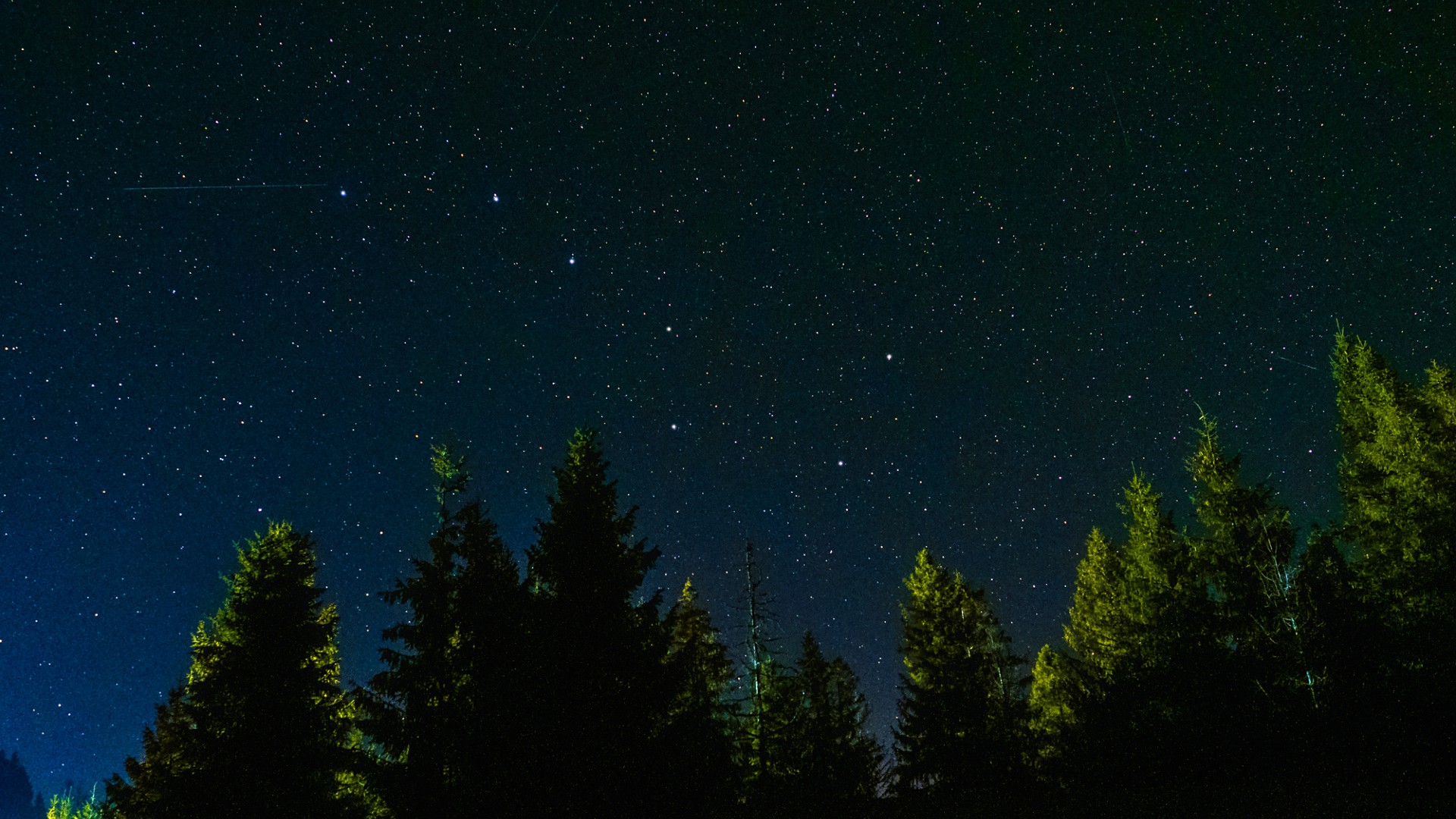
The Big Dipper points to a number of spring constellations including Böotes the Herdsman, Virgo the Virgin and Leo the Lion. To find Böotes one can "arc to Arcturus" – draw a sweeping arc along the handle of the dipper until you reach a reddish-orange star. That's Arcturus, the alpha star of Böotes. Continue on the arc from Arcturus in the same direction and you encounter a bright white star; that is Spica, the brightest star in Virgo, rising in the east.
Going back to the Big Dipper, draw a line from Dubhe through Merak (away from Polaris) and one hits the middle rough trapezoid formed by the stars in Leo – at this time of year one will be tracing that line almost directly overhead. Face south (so that the Dipper is behind you). On the bottom left side of the trapezoid is Denebola, or Beta Leonis, the Lion's tail. The two stars at the top of the trapezoid are Algeiba (Gamma Leonis) on the right and Delta Leonis (called Zosma) on the left. Regulus (Alpha Leonis) is on the bottom right.
Between Regulas and Denebola is Theta Leonis, also called Al-Haratan. This fainter star makes a right triangle with Denebola and Zosma with the right angle at Al-Haratan. If one looks at the top of the trapezoid again, starting at Algeiba, there is a group of three fainter stars that makes a curved shape, called the Sickle, that is Leo's head and mane.
In the Southern Hemisphere's mid latitudes, it is fully dark by about 7:00 p.m. The Southern Cross is rising in the southeast, about halfway up the sky with the long side of the central post pointing to the right (southwards). Below the Cross one can see Centaurus, the Centaur, and in it Alpha Centauri, also called Rigil Kentaurus, the sun's nearest stellar neighbor – it's easy to find because the short crossbar of the Cross points to it. Near to Alpha Centauri – above and slightly to the left – is Hadar, the second-brightest star in Centaurus.
Looking up from the Southern Cross, and turning to the right (towards the southwest) one can see Canopus about two thirds of the way to the zenith; Canopus is one of the brightest stars in the sky and thus easily recognizable (it will be the brightest object in the region). Canopus, shows Carina, the Keel, one of the three constellations that made up the legendary Argo, the ship Jason sailed.
Turning further west one will see Canis Major and Sirius, which in contrast to the Northern Hemisphere skies is high; about 60 degrees above the horizon. Look towards the horizon from there and one can see an "upside down" Orion.
Join our Space Forums to keep talking space on the latest missions, night sky and more! And if you have a news tip, correction or comment, let us know at: community@space.com.

Jesse Emspak is a freelance journalist who has contributed to several publications, including Space.com, Scientific American, New Scientist, Smithsonian.com and Undark. He focuses on physics and cool technologies but has been known to write about the odder stories of human health and science as it relates to culture. Jesse has a Master of Arts from the University of California, Berkeley School of Journalism, and a Bachelor of Arts from the University of Rochester. Jesse spent years covering finance and cut his teeth at local newspapers, working local politics and police beats. Jesse likes to stay active and holds a fourth degree black belt in Karate, which just means he now knows how much he has to learn and the importance of good teaching.
You must confirm your public display name before commenting
Please logout and then login again, you will then be prompted to enter your display name.
